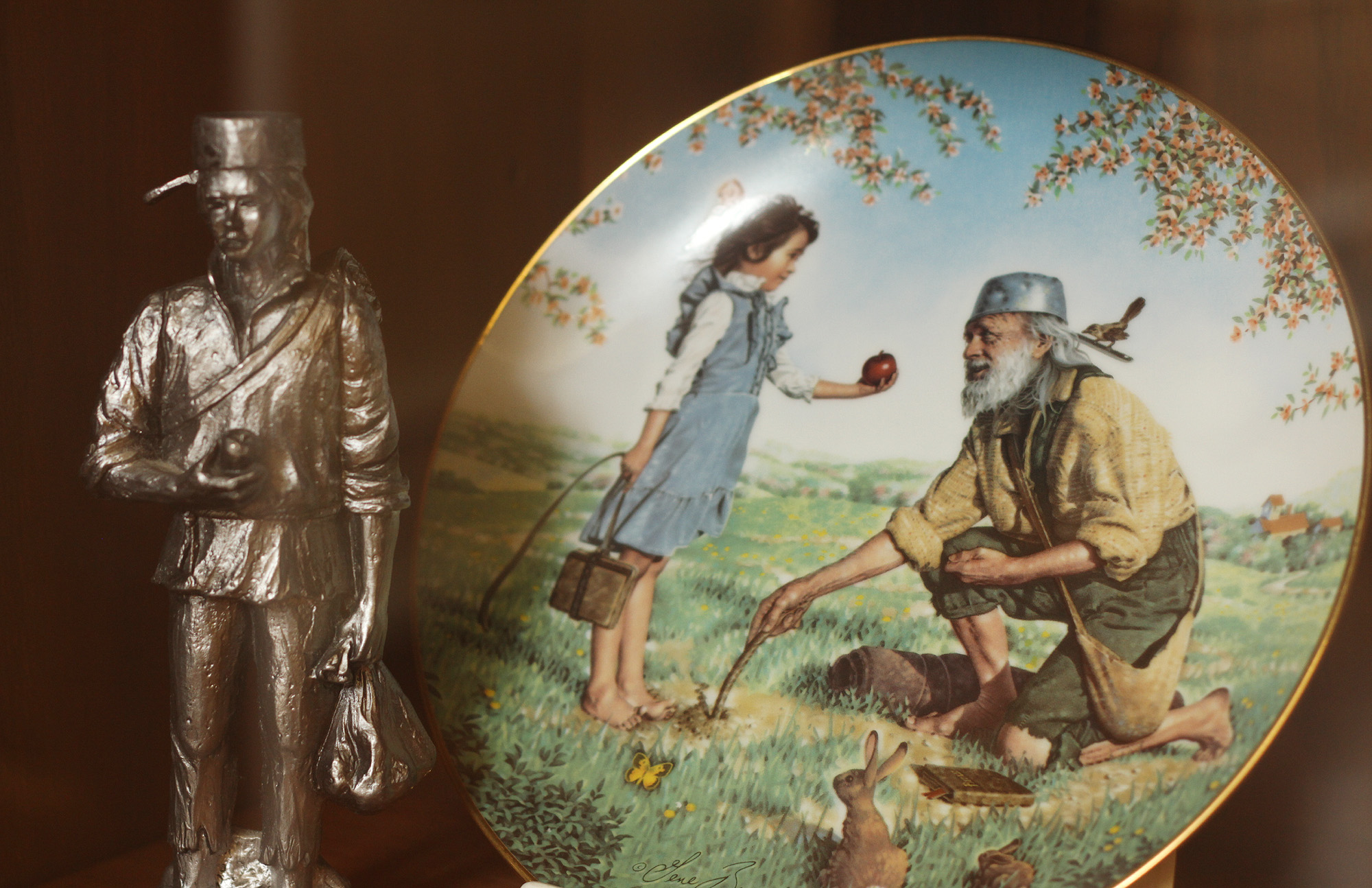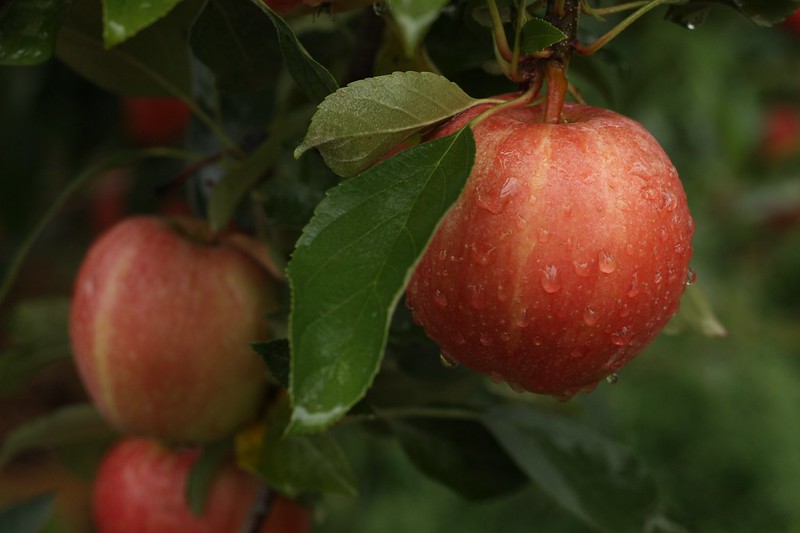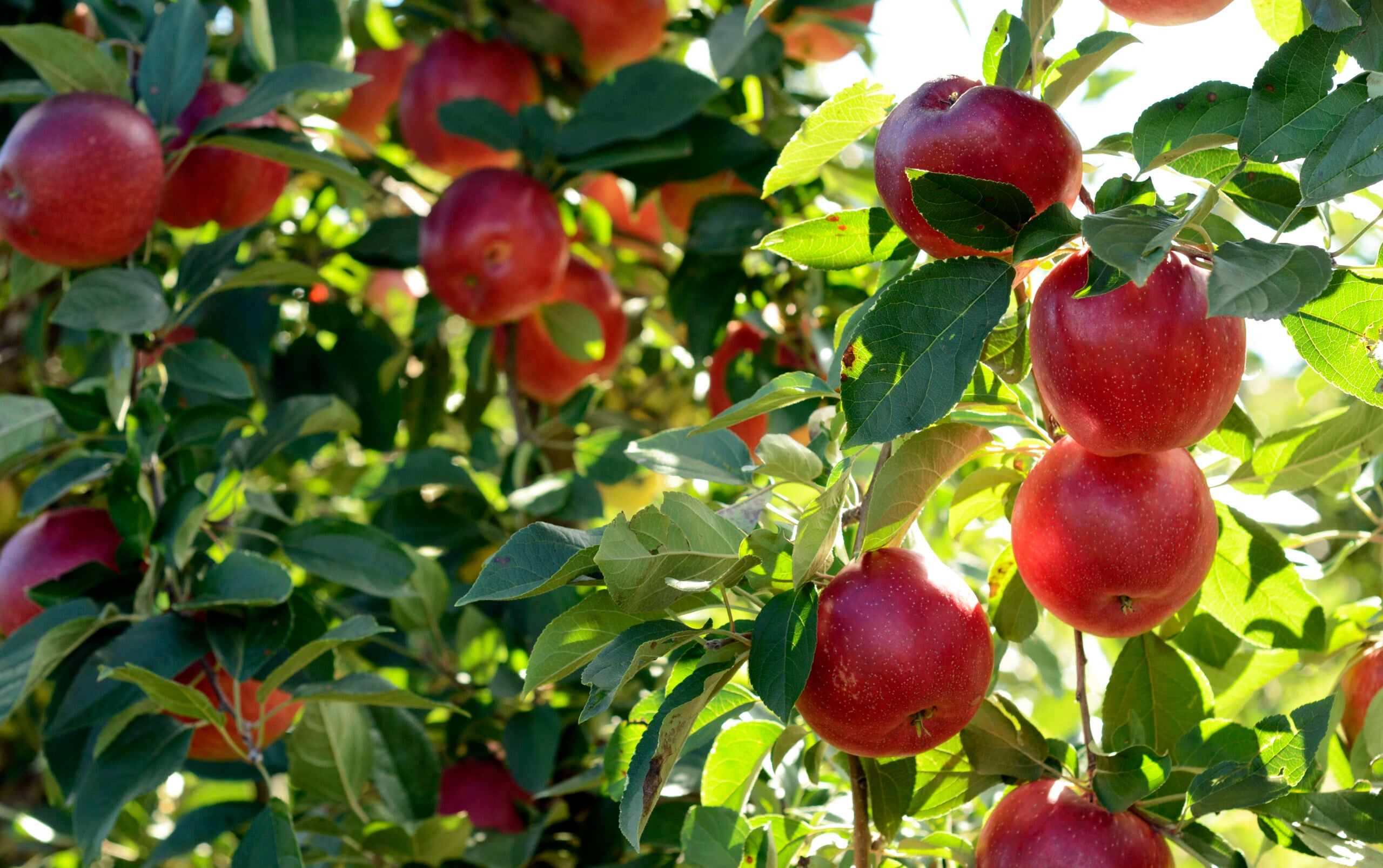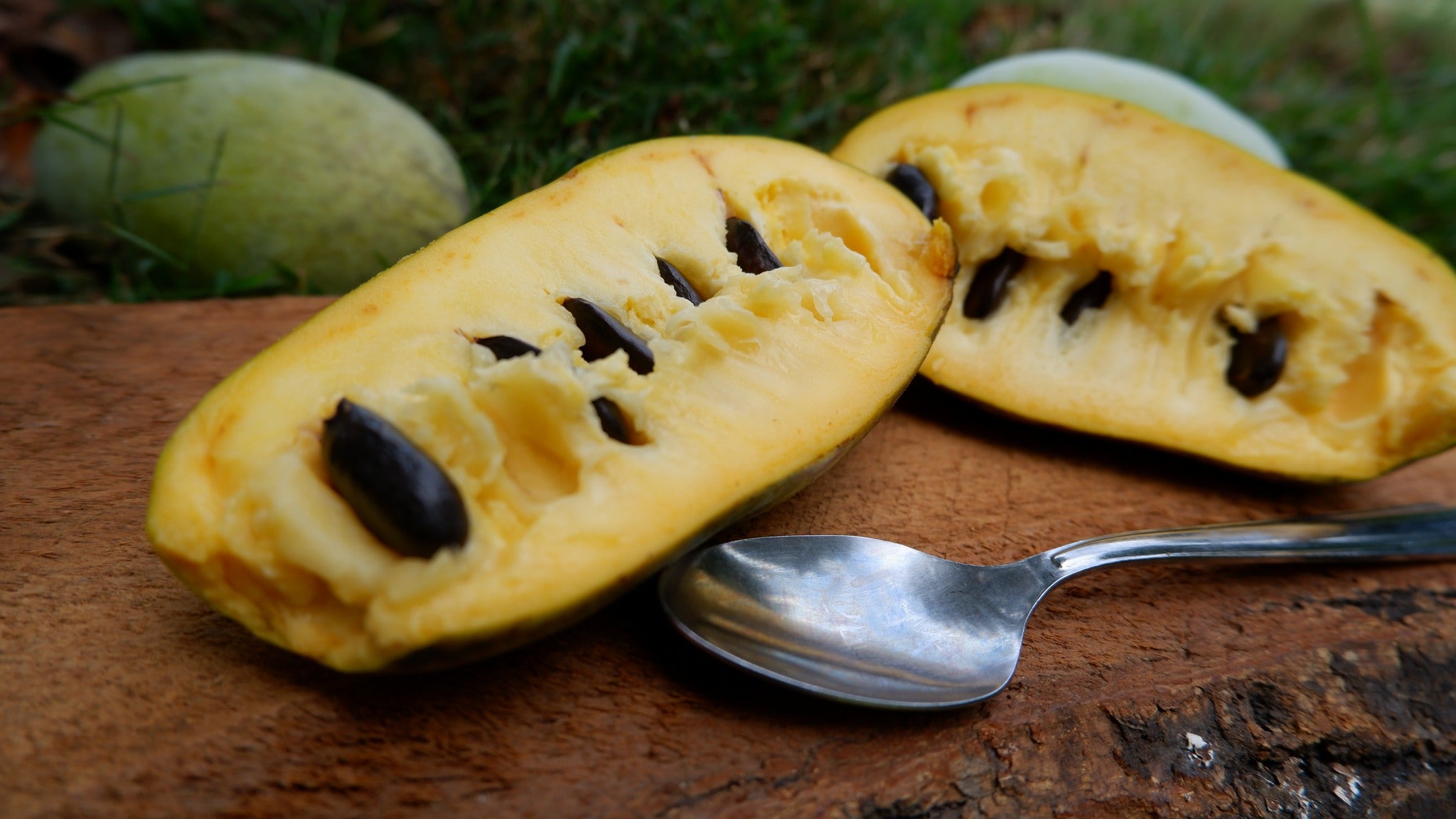Dan Bussey grew up surrounded by old apple trees on his family’s Edgerton orchard. He didn’t think much of the fruit at the time. All they were good for was mischief. Bussey said he would grab a couple of green apples and bounce them off his brother’s head when he wasn’t looking.
It wasn’t until Bussey bought land of his own that his passion for apples blossomed.
Bussey told WPR’s “Garden Talk” he was perusing a copy of Blair and Ketchum’s Country Journal magazine looking for fruit trees to plant. He stumbled across a book review for “Apples & Man” by Fred Lape.
Stay informed on the latest news
Sign up for WPR’s email newsletter.
It’s about old varieties of apples, and the review was peppered with whimsical apple names like “Sheep Nose,” “Cow Snout” and “Cat’s Head.” That piqued Bussey’s interest in apple history, and he ran with it.
Grocery sacks full of old horticultural manuals, dusted library books and a 40-megabyte hard drive are evidence of Bussey’s work to record the story of the apple. He’s also written seven volumes of “The Illustrated History of Apples in the United States and Canada.”
And, Bussey’s working on a book about Wisconsin apples.
“That’s the fun of it, is looking at the stories — not just the apples — but the stories behind them. The stories with the people that these apples originated from,” Bussey said. “And that’s been really fascinating. I will be doing this the rest of my entire life at this point.”
Bussey joined Larry Meiller to share the stories behind a few beloved apple varieties. The pair heard from several callers during “Garden Talk.”
The following interview has been edited for brevity and clarity.

Larry Meiller: You brought me a couple of apples here. What did you bring me? I’m just dying to crunch into one.
Dan Bussey: This is one of the rarest varieties in Wisconsin. It came from Greenfield Township near Sauk City. It’s called a Dockham Russet, and it’s named after the Dockham family that settled in Greenfield Township.
We found a tree through the help of the Ho Chunk people that let us look through the Badger Army Ammunition Plant preserve. We look for old apple trees on this preserve because of all the farmers that got chased off back in 1941, when the U.S. Army was going to build an ammunition plant. The U.S. Army took all the buildings down, but they left a lot of the remnant orchards still in the area.
My friends Kurt Meiny, Rob Nury and I have been discovering apples there for the last 10 years or so. This is one apple I’ve been able to identify, and it is a wonderful apple. It’s a red, russeted apple. Each year it changes a little bit. Really fine flesh, very nice flavor. But there is only one bearing tree that I know of in this country, and it’s there in Sauk County.
Caller in Appleton: Could you tell us anything about the story of the Wolf River apple?
DB: I dug into the Wolf River apple because many of the stories surrounding it are wrong. It’s been attributed to William Springer. He was told to be a Quebec lumberman. But that’s not quite right: He actually was from upstate New York.
During the winter, farmers worked in lumber mills or lumber fields. Wisconsin had a lot of that going on, too. Springer worked in Quebec lumbering trees during the winter time. But later on, he decided he wanted to try his fortunes West. Springer took his family on a wagon, and they headed across the United States. They stopped at the south end of Lake Erie, where they bought a bushel of apples to eat along the way. Springer told his family to save the seeds because they didn’t know what they’d find where they were headed.
Springer eventually ended up just west of Fremont, in a place called Evanswood near the Walla Walla Creek. Anyway, a couple years later, Springer ended up squatting on land at the south end of Partridge Lake, which is at the widening of the Wolf River just west of Fremont. People called squatting preemption in those times.
There, Springer planted the seeds of these apples, and had a nursery going. He was quite the avid nurseryman. But Springer sold this tree to a gentleman who had a farm on the east bank of the Wolf River. Some records called him Henry Rifflin.
I tried to find “Rifflin” in all the census records, and I couldn’t find anything. Turns out, his name was actually “Reifland,” a German man. Once I found that, everything kind of fell into place.
Reifland died fairly early. His widow married a man by the name of Joseph Stigler (whose name is also misspelled in all the literature. It was hard to find all of the correct names).
So, Reifland is the man who raised this tree and got it to fruit. The neighbors loved it, and he was the one who named the Wolf River apple — not Springer.

Caller in Madison: I was born in Wisconsin, but grew up in Leominster, Massachusetts, and local lore was that Jonathan Chapman, or Johnny Appleseed, came from Leominster. What do we know of him, and what types of apples would he have been sharing?
DB: He was a very interesting character. He’s one of those iconic American figures. John Chapman did not believe in grafting apples — that was abhorrent to him. The only thing he would do was collect apple seeds from the cider mills in New England, and he would travel up and down the Ohio River.
John would start nurseries using these apple seeds. He sometimes bought the land, and sometimes he didn’t, but that’s how people moved in those days. The government rule was, at the time: If you weren’t going to homestead, you had to at least plant fruit trees.
So, John setup nurseries to sell to these people that were moving upstream. By the time he died, he was one of the richest landowners in the Ohio River Valley. I think he got as far as Fort Wayne.
But John is an amazing figure, very true to form. He was a friend of both the Native Americans and early settlers that traveled through.
LM: One piece of history that may or may not be true was that the farmers often used the apples for hard cider.
DB: Oh, yeah. Sometimes water wasn’t safe to drink, so the cider was a beverage that everybody had.
Kids had a glass of cider before they went to school or worked on the farm. Politicians would have a glass of cider before they went to work. I think a few of them now could probably use a glass of cider before they start their day. Cider was the national beverage. It was about 4 or 5 percent alcohol, not particularly strong.

Caller in Duluth: I’m looking for a specific kind of heirloom variety called Fireside. Do you know any orchards that are specializing in heirloom apples?
DB: I know of a couple of Fireside trees in Decorah, Iowa. I’m going to give a shout out to a couple of orchards I know have heirloom varieties.
Karen and John Kring from Suamico have Maple Valley Orchards. Bill Stone from Brightonwoods Orchards in Burlington has a lot of heirloom varieties. Weston’s Antique Apples in New Berlin also has a lot of heirloom varieties, and I bet you they’ve got Fireside as well.
So, there’s a couple really good people that are hanging on to these old, old varieties.
LM: Are there certain types of apples that make the best pies?
DB: My mother was a home economics teacher, and she taught her sons to bake. Considering our dubious employment or marital prospects, at least we wouldn’t starve.
I don’t make a pie unless I have about three varieties. Now, if you don’t know what to do with an apple, hold it in your hand.
Does it feel heavy for its size, like a cue ball, or is it light like a puffball mushroom? The ones that are denser and heavier tend to stay firm in a slice. The ones that are softer tend to cook down.
I like to mix the firm slices with ones that make a sauce around them. If I can get it, I add a red-fleshed apple for color. Then you’ve got the perfect pie.

